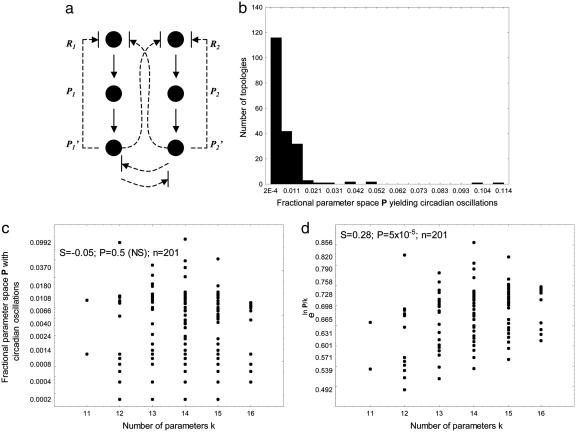Fig. 1.
Different oscillator topologies vary greatly in their robustness. (a) Circadian oscillator topologies. Shown are six molecular species (circles) that are the mRNA (R) and protein (P) products of two genes, 1 and 2. The upper and lower solid vertical arrows represent translation and posttranslational modification, respectively, of these species. Arrows terminated by a crossbar indicate that a regulatory interaction can be either activatory or inhibitory. Solid lines indicate interactions that are present in all of the circuit topologies examined here. Dashed lines indicate regulatory interactions that may be present or absent, depending on topology. There are six such regulatory interactions, each of which can be activating, repressing, or absent. This amounts to a total of 378 possible circuit topologies that I explore here (36 = 729 total topologies minus symmetric topologies, as defined in Supporting Text). (b) Histogram of the fractional parameter space volume P leading to oscillatory solutions for 201 topologies for which at least one in 5 × 103 randomly chosen parameter combinations leads to oscillatory solutions. (c) Statistical association between the number of parameters and P. (d) Statistical association between the number of parameters and eln P/k.

